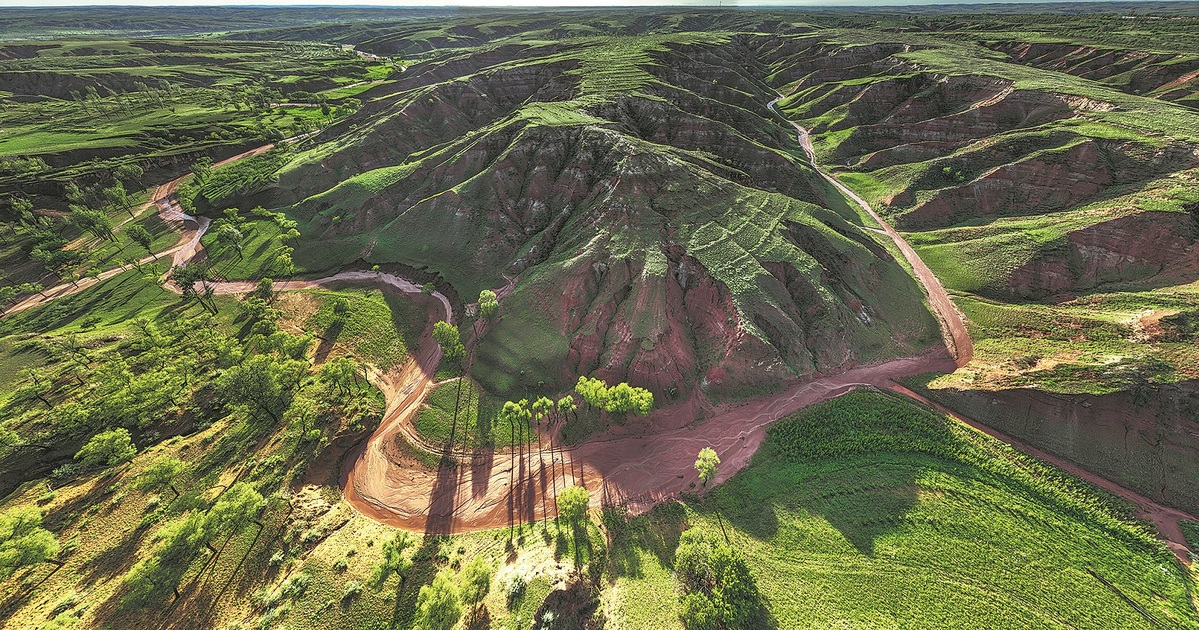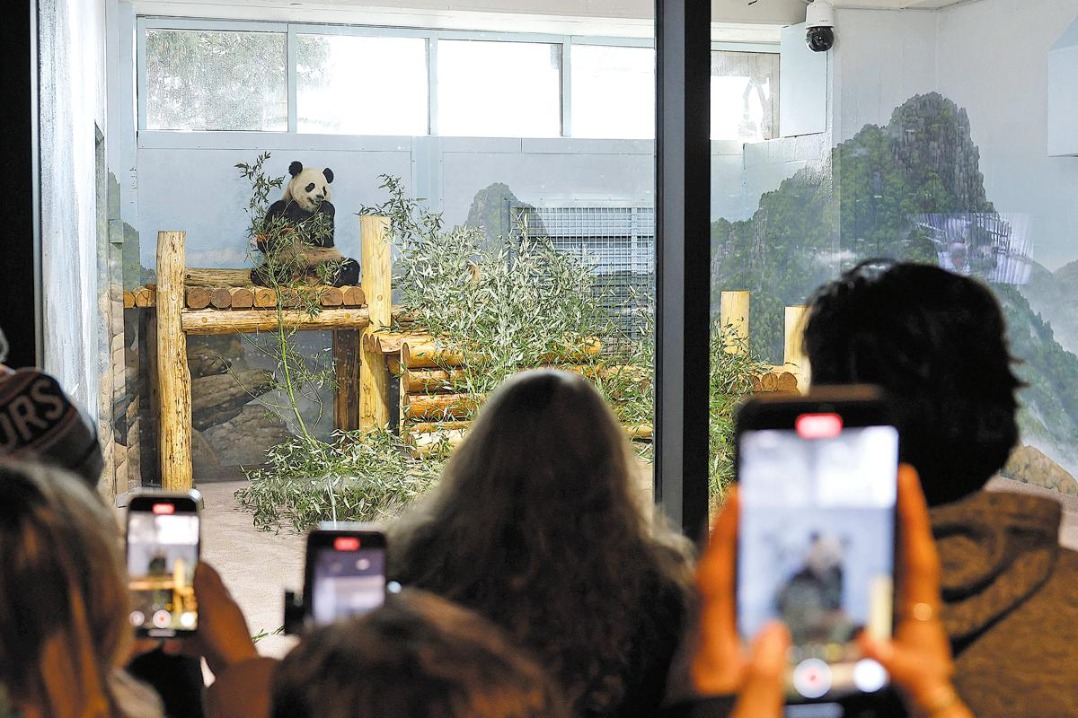Apple orchards mitigate soil erosion
Inner Mongolia gets to grips with fragile sandstone






Editor's note: China Daily is publishing a series illustrating the country's efforts to achieve its carbon peak and carbon neutrality goals.
Due to the unyielding erosion caused by wind and rain, Hua Shengming's reminiscences of his home village Deshengyouliang, in Inner Mongolia autonomous region's Juungar Banner, portray a stark tableau of his formative years.
Yellow sand often danced in the spring air, and red mud flowed frequently during the summer rain.
The landscape was devoid of greenery, the 55-year-old said.
In the vicinity of the village, most land is covered by Pisha sandstone, with only a few trees and sporadic patches of weeds, creating a scene of desolation, according to the man of the Mongolian ethnic group. Less than 10 percent of the land in Deshengyouliang has a thick topsoil layer.
"No matter what we planted, we could hardly harvest anything," he said, adding his family seldom made more than 10,000 yuan ($1,360) a year around the turn of the millennium.
Today, standing amid lush apple trees, however, his joy goes beyond words. The flying yellow sand and flowing red mud are a thing of the past. His 9-hectare orchard now makes his family an annual income of over 1 million yuan.
This transformation has occurred as a result of a comprehensive set of initiatives implemented by the local authorities. These measures involved treating the Pisha sandstone to mitigate water loss and soil erosion, while also integrating industrial development into the remediation efforts.
The Pisha sandstone, a unique soft rock formation found in the semiarid regions along the upper and middle reaches of the Yellow River and the Loess Plateau, undergoes significant erosion from wind and rainfall.
The area characterized by Pisha sandstone is often termed "the most extreme case of water loss and soil erosion globally", earning the ominous moniker of "earth cancer" from local residents and experts both domestically and internationally.





















